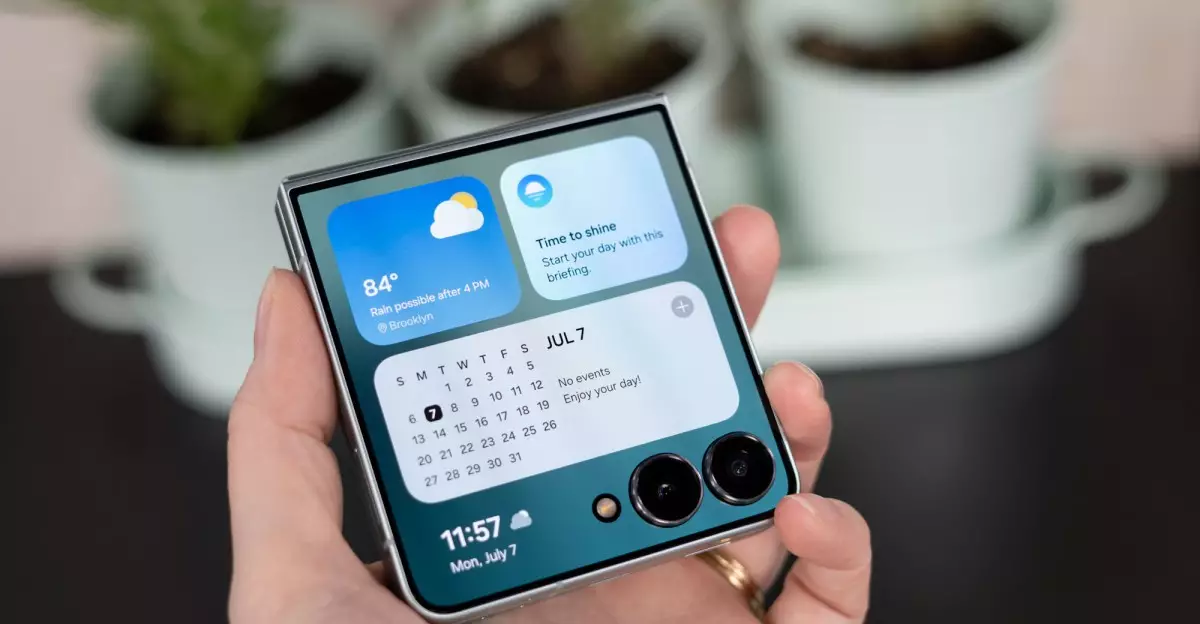In the rapidly evolving landscape of mobile innovation, foldable smartphones have emerged as a bold leap forward—yet, beneath their sleek surfaces lies a persistent vulnerability: susceptibility to dust ingress. Unlike traditional slab phones, which benefit from comprehensive sealing and IP ratings, foldables—including flip-style and book-style designs—still grapple with a fundamental issue: protecting their intricate hinges and delicate screens from tiny particles that threaten their longevity and functionality.
Historically, the industry gravitated toward one-size-fits-all slab devices, prioritizing durability with high IP ratings—IP68 being the gold standard, offering protection against dust and water. Foldables, however, have lagged behind in this regard because their complex hinge mechanisms and flexible screens create many nooks and crannies where dust can settle. Early efforts by manufacturers like Samsung faced immediate setbacks; review units revealed that even minute particles could cause bulges, creases, or worse, screen failure. Such problems were not trivial—they signaled that foldable screens could be just one speck of dust away from catastrophic damage, posing a significant barrier to mainstream adoption.
One might argue that this is a technical challenge, but it is also a question of user confidence. When potential buyers hear stories of dust-related failures, the perceived risks eclipse the allure of cutting-edge design. This skepticism is further compounded by the fact that most current foldable devices only achieve IP48 ratings—protection against particles larger than a millimeter. Considering tiny dust particles are vastly more numerous and pervasive in everyday environments, this protection level seems inadequate for sustained, reliable use.
Industry Response and Innovation Stagnation
The response from major manufacturers has been a mixed bag. Samsung and Motorola, the largest players in the foldable space, have made notable advances in screen durability and water resistance, achieving IP ratings like IP68 for some models. Yet, these ratings often do not extend to dust resistance in a meaningful way. For instance, a standard IP68 offers complete protection against dust, but many foldables only carry an IP48 rating, which leaves a gaping vulnerability—particles that can slip past seals and settle into vulnerable hinge areas or beneath layers of protective film.
This inconsistency highlights a fundamental limitation: creating a truly dustproof foldable is an enormous engineering challenge. The moving parts—the flexible hinge, dual screens, and fold lines—are inherently difficult to seal completely without compromising flexibility or adding excessive bulk. Minseok Kang, Samsung’s smartphone planning head, candidly admits that achieving full dust resistance in foldables is “difficult,” yet he does not dismiss the possibility outright. Perhaps hope lies in incremental improvements rather than groundbreaking, all-encompassing solutions.
The ongoing whispers about future devices—like the rumored dustproof Google Pixel 10 Pro—reflect a mounting industry awareness that dust resistance is no longer a luxury but a necessity for wider adoption. But the road to a truly sealed foldable phone remains fraught with engineering hurdles, from material selection to hinge design. Most consumers, and even reviewers, are hesitant to risk their investment on devices that may fail after exposure to common environmental particles, which are often invisible yet destructive over time.
The Road Toward Dustproof Foldables: A Dream or a Reality?
Despite these challenges, optimism persists. Manufacturers are experimenting with innovative hinge mechanisms, incorporating magnetic seals, and deploying new materials designed to repel or trap dust before it can reach sensitive components. There is a growing consensus that achieving an IP68-like level of dust resistance, combined with the flexibility of foldable designs, is theoretically possible—just not easily or cheaply.
The key issue is whether brands are willing to shoulder the development costs and accept manufacturing complexities to bring dustproof foldables to market. The stakes are high: consumers demand devices that blend cutting-edge design with real-world durability. Without addressing dust ingress, foldables risk remaining niche products for enthusiasts rather than mainstream devices. The question is whether future models will break the mold—delivering foldables that can endure life’s inevitable grime without sacrificing their innovative form factors.
Looking beyond Western markets, brands like Oppo, Huawei, and Xiaomi already offer foldables that might not be officially marketed as dustproof but are designed with different priorities. Their global success suggests that the consumer appetite for foldable aesthetics and functionality remains strong, even if durability lags behind traditional phones. As these brands develop their own solutions, they provide valuable lessons for Samsung and Motorola—if only they can navigate the sticky challenge of sealing tiny particles out.
An intriguing development on the horizon is the potential for foldables that make the leap to full dust resistance—confirming that greatness does not have to come at the expense of durability. The pursuit of an IP68 foldable is no longer a distant dream but an attainable goal, albeit one that will require novel engineering, innovative materials, and perhaps, a reimagining of hinge design.
The future of foldable smartphones hinges on whether industry leaders are willing to prioritize dust resistance alongside form factor innovation. As it stands, the dust threat remains an invisible, yet potent adversary, threatening to undermine years of progress. But with persistent innovation and a clear vision, the era of truly rugged, dustproof foldables may not be as far off as it seems—if those in charge embrace the challenge wholeheartedly.

